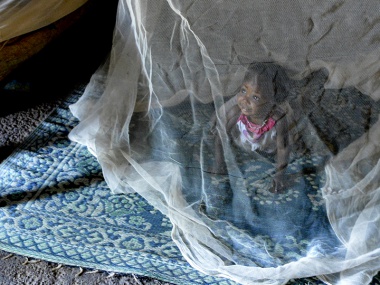
Reports in Time magazine today (Jan 13, 2015) about Insecticide Resistance in Mali shouldn’t really come under the heading of news. We’ve known about insecticide resistance in mosquitoes for a long time. In fact, that’s one of the reasons IVCC was set up in 2005—to develop new and effective vector control tools to challenge insecticide resistance.
But what is more serious is the comment in the article that resistance has ‘reached a level at some localities in Africa where it is resulting in the failure of the nets to provide meaningful control’. This is not only inaccurate, it is positively harmful. Even if insecticides on bednets shows limited efficacy in some cases, the physical barrier of the bednet still provides a meaningful level of protection—over 50% according to WHO. The article also fails to point out that the impact of growing insecticide resistance is not yet fully understood, nor is it distributed evenly across sub-Saharan Africa.
Long-lasting Insecticidal Treated bednets (LLINs), and Indoor Residual Spraying (IRS) have been remarkably successful over the past 15 years in reducing deaths and sickness from malaria across sub-Saharan Africa. In the World Malaria report 2015, the WHO reports that malaria mortality rates have decreased by 54% in the region during this period and that 44% of the population at risk is now sleeping under a LLIN. They estimate that 670 million fewer case and 4.3 million fewer malaria deaths occurred between 2001 and 2013 than would have occurred if incidence and mortality rates had remained unchanged.
Undoubtedly, some of this is due to better drug therapies and more effective diagnostics and health systems and that is also good news. But a large portion of it is also down to effective protection of the people at risk, especially the most vulnerable groups of pregnant women and young children. There is substantial evidence that LLINs and IRS have been remarkably efficient. The massive distribution of bednets has been a major lifesaver.
Ironically, the success of bednets and IRS one of the reasons why resistance has been developing. It’s a natural response from an insect population under stress. (See our video ‘The Tipping Point’) And it’s why we’re developing new anti-malarial insecticides that are safe for people and the environment that could bring to an end this never ceasing circle of solution-resistance-solution. (See our video ‘Why 3 new Ais’)
Working with the world’s leading agro-chemical companies, and top scientific experts in entomology and chemistry, we have already isolated 9 new chemical classes of anti-malarial insecticide with completely new (and different from each other) modes of action. This year we will select 3 of these to go into full development. If funding is adequate and the extensive regulatory processes are passed, these new insecticides will be in operation in the field by 2022.
In the meantime we have developed new formulations of existing insecticides for IRS, and have some novel approaches to bednets that are currently undergoing evaluation.
Time reports scientists are urging ‘the development of new and effective malaria vector control strategies’. Right, we’re on the case and the finishing line is in sight.



